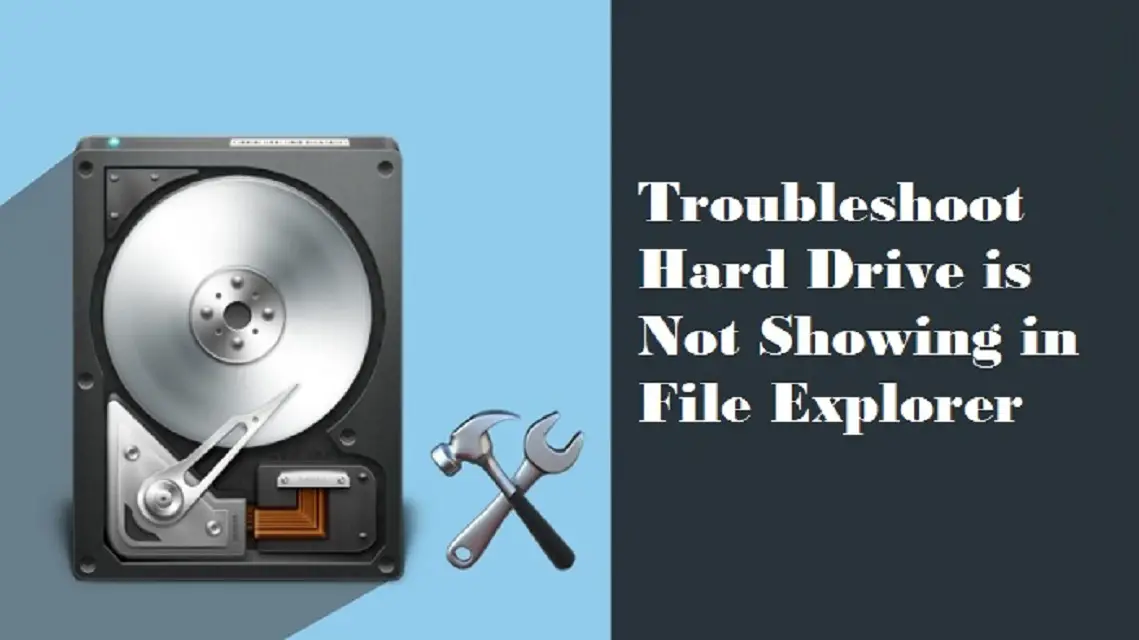An external Hard Disk Drive (HDD) or a Solid-State Drive (SSD) works perfectly with Windows 10 and gets detected automatically once plugged. Even though plugging a hard drive seems like an easy process, sometimes it doesn’t show up in File Explorer just after it gets connected. Well, the reason could be any, but you can troubleshoot it if you’re facing the same issue.
If the hard drive you connected with Windows 10 computer is not showing in File Explorer and indicating device disabled, drive letter missing or offline. Try to connect it on another computer, and check whether the problem is resolved or the same. It might be possible that your hard drive is corrupted, and you should get another and try to configure another hard drive. However, if the hard drive is not corrupted, the reason could be something else, and there are ways to troubleshoot it.
How to Troubleshoot Missing Hard Drive in File Explorer through Physical Troubleshooting
If a hard drive or Solid-state drive is not appearing in File Explorer, you can try out a few basic methods. Before getting into the system to resolve the issue, you should try out these basic troubleshooting steps:
- Check the hard drive connectivity, and make sure it is connected properly with the computer.
- If you’ve connected the hard drive through a USB drive, then disconnect it and connect it back or try a different USB cable.
- If there’s an internal hard drive, make sure its power cable serves the proper supply and is connected to the motherboard and hard drive properly.
- Try to connect the same hard drive with a different computer, and check its response.
All these steps are related to physical problems, make sure to check all these steps and follow them correctly.
How to Troubleshoot Missing Hard Drive in File Explorer through Device Manager
If your hard drive is missing from File Manager or Disk Manager, it might happen because the drive is disabled. So if you’re not about it or willing to enable it back, here’s what you need to do:
- Launch Start menu.
- Find the Device Manager by typing in the Search box.
- Open the top result.
- Full open the Disk drive.
- Make a right-click on the hard drive.
- Press Properties.
- Tap on the Driver button.
- Press the Enable Device option.
- Tap OK.
Once you finish these steps, your hard drive will begin to appear on your computer.
How to Troubleshoot Missing Hard Drive in File Explorer through Disk Manager
To make a hard drive visible in File Explorer, you must go through several procedures. You must do a proper partition of disks and give them a name with the drive.
Set Drive Online
- Press the Start menu.
- Find the Disk Manager by typing the name in the Search bar.
- Press and open the first or top-most result.
- Make a right-click on the disk with the offline icon.
- Press Online.
By following these steps, if your hard drive was configured previously and was offline, it will appear in the File Explorer. But if the drive was never configured and was offline, here’s what you need to do:
Initialize Drive
- Launch Start menu.
- Find Disk Manager by typing the name in the Search bar.
- Make a right-click on the disk with the Unknown sign.
- Choose Initialize Disk.
- Now under the Select Disks section, mark on the preferred drive to initialize.
- Choose GPT (GUID Partition Table).
- Press OK.
By following the above-mentioned steps, everything will be erased from the disk or prepared to format the drive.
Set Up Drive Letter
If you initialize a hard drive in the system, but if it’s still not appearing, then there could be two different reasons for it. First one is if you haven’t configured the drive letter, and the second one is because you paired it with another computer, and the new system is trying to configure the same name. Here’s how you can set up the drive letter on storage media on Windows 10:
- Launch Start menu.
- Find Disk Manager by typing the name in the Search bar.
- Make a right-click on the partition on the hard drive with no drive letter.
- Choose Change Drive Letter and Paths.
- Press the Add option.
- Choose Assign the following drive letter.
- Under the drop-down menu, choose a drive letter.
- Press OK.
Once you follow these steps and set a drive letter, you’ll see the drive in File Explorer.
Conclusion
HDD and SSD are both best for storing data and system performance, and it is necessary to have a storage drive. However, if a user needs additional storage to store data, they can use a USB cable to connect with an external hard drive.
I am extremely passionate about blogging, running websites, and creating content. I have managed to turn my passion into a profession, and blogging has managed to teach me a lot about technology and myself. I write blog posts, instruction manuals, news releases, and technical descriptions, and reviews for many websites such as mcafee.com/activate
Source: Troubleshoot Hard Drive is Not Showing in File Explorer






